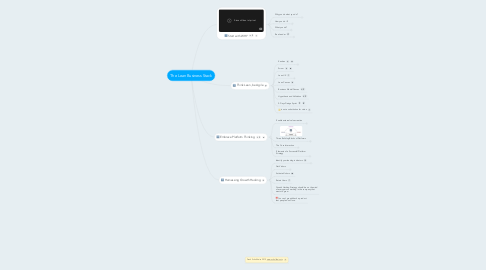
1. Embrace Platform Thinking
1.1. Enable external value creation
1.1.1. Empower co-creation by users and extentions by developers
1.2. Three Building Blocks of Platforms
1.2.1. The Core Value Unit
1.2.2. The Interaction
1.2.3. The Platform
1.3. The Core Interaction
1.3.1. set of actions that producers and consumers engage in repeatedly to derive value.
1.3.2. All actions in the core interaction fall into one of the buckets: Creation, Consumption, Curation
1.3.2.1. Creation: producer who creates value
1.3.2.2. Consumption: consumer, who consumes value
1.3.2.3. Curation: To encourage good quality and quantity of value creation, as well as to ensure the right consumers consume it, you need some form of curation.
1.3.2.4. You need all three actions: Creation, Curation and Consumption to repeatedly occur for the platform to work properly.
1.4. Elements of a Successful Platform Strategy
1.4.1. The success of a platform strategy is determined by three factors:
1.4.1.1. Connection: how easily others can plug into the platform to share and transact
1.4.1.2. Gravity: how well the platform attracts participants, both producers and consumers
1.4.1.3. Flow: how well the platform fosters the exchange and co-creation of value
1.4.2. Four Layers of a Platform
1.4.2.1. The Toolbox
1.4.2.2. The Matchmaker
1.4.2.3. The Magnet
1.4.2.4. The Monetizer
2. Think Lean, be Agile
2.1. Kanban
2.1.1. Principles
2.1.1.1. Start with what you do now
2.1.1.2. Agree to pursue evolutionary change
2.1.1.3. Initially, respect roles, responsabilities, job titles and processes
2.1.1.4. Encourage leadership at all levels in the Organisation
2.1.2. Practices
2.1.2.1. Visualize
2.1.2.2. Limit Work in Progress (WIP)
2.1.2.3. Manage flow
2.1.2.4. Make policies explicit
2.1.2.5. Implement Feedback Loops
2.1.2.6. Improve collaboratively, evolve experimentally
2.2. Scrum
2.3. Lean UX
2.3.1. Design Thinking
2.3.2. Lean Startup
2.3.2.1. Build, Measure, Learn
2.3.2.2. MVP Minimal Viable Product
2.3.2.3. Customer Development
2.3.2.4. Pivot
2.3.3. Agile Manifesto
2.3.3.1. Individuals and interactions over processes and tools
2.3.3.2. Working software over comprehensive documentation
2.3.3.3. Customer collaboration over contract negotiation
2.3.3.4. Responding to change over following a plan
2.4. Lean Canvas
2.5. Business Model Canvas
2.6. Hypothesis and Validation
2.7. 5-Days Design Sprint
2.8. is not a substitution for vision
3. Harnessing Growth Hacking
3.1. Identify your leading indicators
3.1.1. Successful Example Metrics
3.1.1.1. Facebook
3.1.1.2. Dropbox
3.1.1.3. Twitter
3.1.1.4. LinkedIn
3.2. Get Visitors
3.2.1. The 3 P's of getting Visitors
3.2.1.1. Pull them in
3.2.1.2. Push them in
3.2.1.3. Product
3.3. Activate Visitors
3.4. Retain Users
3.5. Growth Hacking Strategy should be on the mind of every person working in the company that wants to grow
3.6. You can't growth hack a product that people don’t love.
4. Start with WHY
4.1. Why you do what you do?
4.1.1. What is your purpose?
4.1.2. You're not looking to do business with people who need what you do. Instead you're looking to do business with people who believe what you believe!
4.1.3. Spend sufficient time to craft the perfect words for your mission/vision. This document will serve as your internal compass or guiding north star and will be communicated from top down and internally to externally
4.2. How you do it?
4.2.1. What is your differentiation?
4.2.2. What is your value proposition?
4.3. What you do?
4.3.1. What need do you solve?
4.3.2. What is your product and Service?
4.4. Be a Leader
4.4.1. Empower People
4.4.2. It's like parenting
4.4.3. is choice, not a rank
